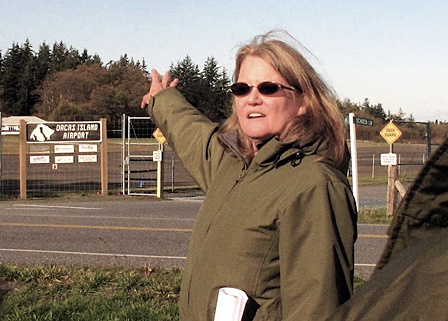A large group of concerned community members gathered at a public meeting held to discuss the proposed update to the critical areas ordinance, or CAO, to be adopted by the county.
The Oct. 12 meeting was intended to gather input to inform the county about the recommendations that would generally increase buffer zones between upland wetlands and development.
“I think what people don’t realize is that water runs downhill in all fifty states and it can pick up contaminants as it runs downhill, before being trapped and inactivated,” community member Janet Alderton said. “That’s why buffers are so critical.”
A panel of professional wetlands scientists were available to describe the details of the recommendations to increase buffer zones.
There are several classes of wetland areas, from bogs to forested areas, which are not always obviously identified as wetlands to the general observer.
In the most classes of wetlands, the CAO update would increase the buffer between the wetland and development by 30 to 105 feet.
In the proposed critical area ordinance, the following would not be allowed in buffer zones:
• New buildings and structures (except wildlife viewing platforms, trails, stairs, and walkways not exceeding five feet in length and constructed with non-treated wood.)
• New residential landscaping.
• Clearing, grading, excavating, filling, paving, mining, dredging, or drilling except for restoration or planting gardens or fruit trees.
• Storage of equipment, materials, or chemicals.
• Pruning of more than 20 percent of vegetation to alter the natural site characteristics.
• Hazardous or sanitary waste landfills.
• Chemical applications like fertilizers and pesticides.
Private property owners expressed concerns about the increased buffers.
Bruce Wiscomb proposed there should be an independent study done, outside of the Department of Ecology and specific to the San Juans, to determine if in fact the current buffer zones are not enough before changes to the ordinance are made.
Kim Secunda said there have been ecology studies done specific to Orcas. She cited a 2001 study by Earth Tech of Bellevue that was included in the Eastsound Urban Growth Area Plan revision that investigated major drainage basins including the conclusion that the Eastsound swale has been diminished by adjacent development. Secunda encouraged the public to seek the information that is already available at the public library.
Scientist Amanda Azous said a lot of the wetlands are not what they used to be in terms of function and the Eastsound swale has been severely impacted by invasive species including the Hawthorne.
Azous said it is an opportunity for the Orcas community to encourage natives to regenerate and encourage species to flourish in Eastsound.
The county web site has posted documents to inform the public on the specific needs and process of the CAO update.
The web site states, “A successful update of our CAO will help assure that our grandchildren will share the same quality of life we enjoy in the islands today.”
For more information or to read the CAO position paper dated Oct. 26, go to www.sanjuanco.com/cao/documents.aspx.



